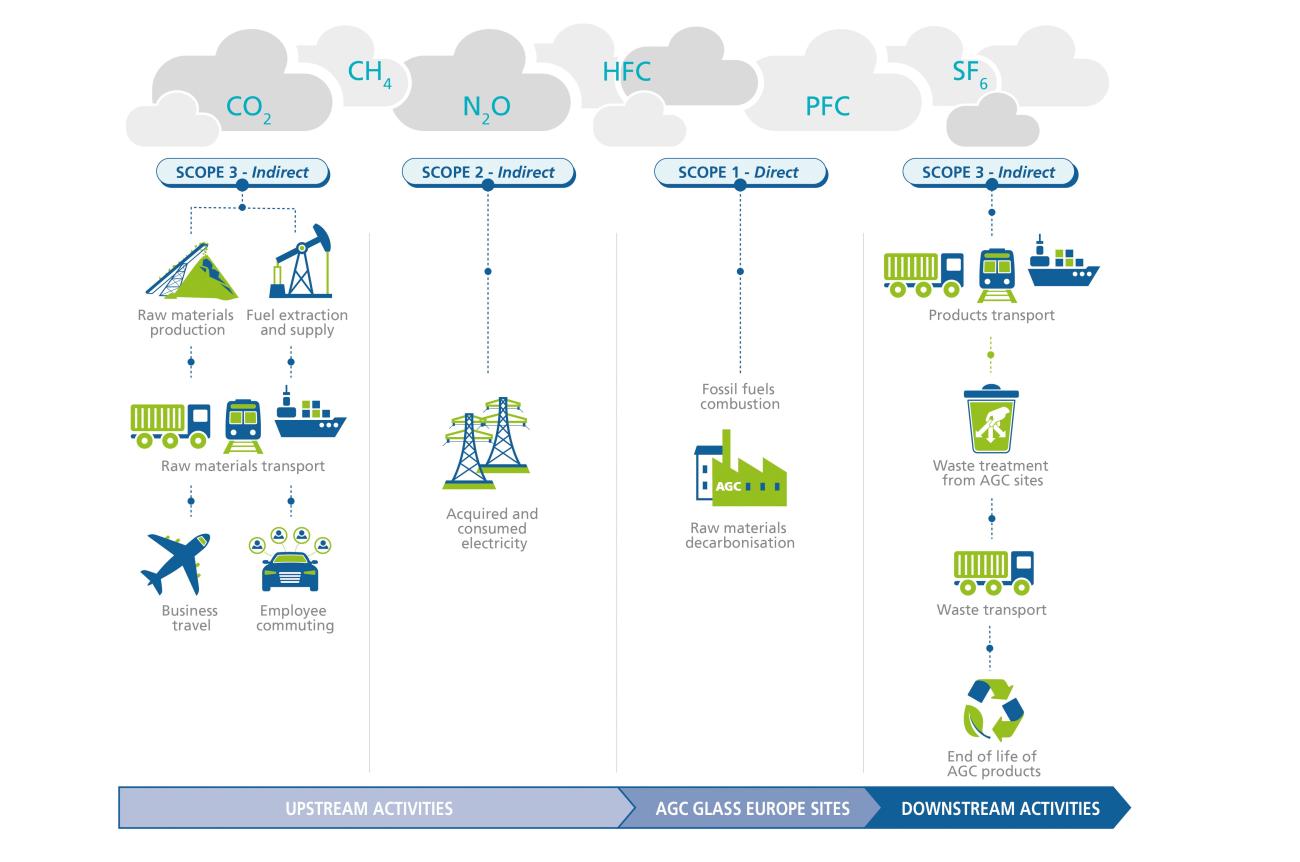As part of AGC Glass Europe’s strategy and its environmental target for 2030, the carbon footprint is assessed on a yearly basis. Relevant internal data is selected in order to reflect, to a major extent, the real GHG inventories within the company. This allows to track AGC’s emissions over time and to assess the company’s performance in terms of CO2 emissions. This methodology is used as a monitoring framework to draw up our dedicated action plans to overcome our impact on climate change in the short and medium terms. Furthermore, this assessment brings quantified answers and provides customers with a clear view of our corporate impacts.
According to GHG calculations, it is estimated that in 2023 the Carbon Footprint of AGC Glass Europe was 2.7 million tonnes of CO2 eq.*
Results show that the main CO2 emissions hotspots are mainly attributed to fuel combustion and raw material decarbonization, raw materials production from our suppliers, and electricity purchased for our production sites. All the mentioned categories represent 80% of the total AGC CO2 emissions. The overview of the emissions is given in the graph below.
(*) Results include Automotive and Architectural division – AGC sites in 20 countries: Austria, Belgium, Czech Republic, Finland, France, Germany, Hungary, Italy, Kazakhstan, Morocco, The Netherlands, Poland, Portugal, Slovakia, Spain, Sweden, Switzerland, Turkey, and the United Kingdom.
Previous year reportings included Brazil and Russia operations. Due to the organizational boundaries, these countries are not included in our current results.
Fuel combustion and raw material decarbonization – Scope 1
In 2023 fuel combustion emitted approximately 1 million tonnes of CO2 eq. and raw material decarbonization emitted 314 thousand tonnes of CO2 eq. These emissions are attributed to conventional carbonated raw materials necessary to glass production (ex. Limestone, Dolomite, and Sodium carbonate), and direct CO2 emissions from decarbonization inside our glass melting furnaces.
Electricity purchase – Scope 2
In 2023, considering the average consumption of all AGC’s sites and the average emissions of the country mix, the amount of electricity purchased represented 262 thousand tonnes of CO2 eq.
Raw Materials Production – Category 1
Approximately 596 thousand tonnes of CO2 were attributed to producing the raw materials needed to manufacture AGC glass products (52% of the total CO2 emissions in Scope 3).
The company uses the GHG Protocol to account for, report, and mitigate the greenhouse gas emissions occurring in its corporate value chain. AGC Glass Europe is continuously working on improving this accounting to progress toward its climate goals. Therefore, the results presented every year are intended to be reference values of AGC Glass Europe CO2 emissions and these may evolve through time.


